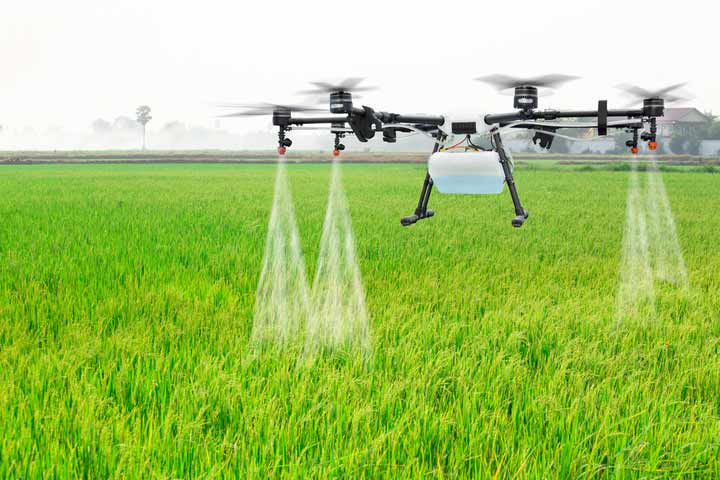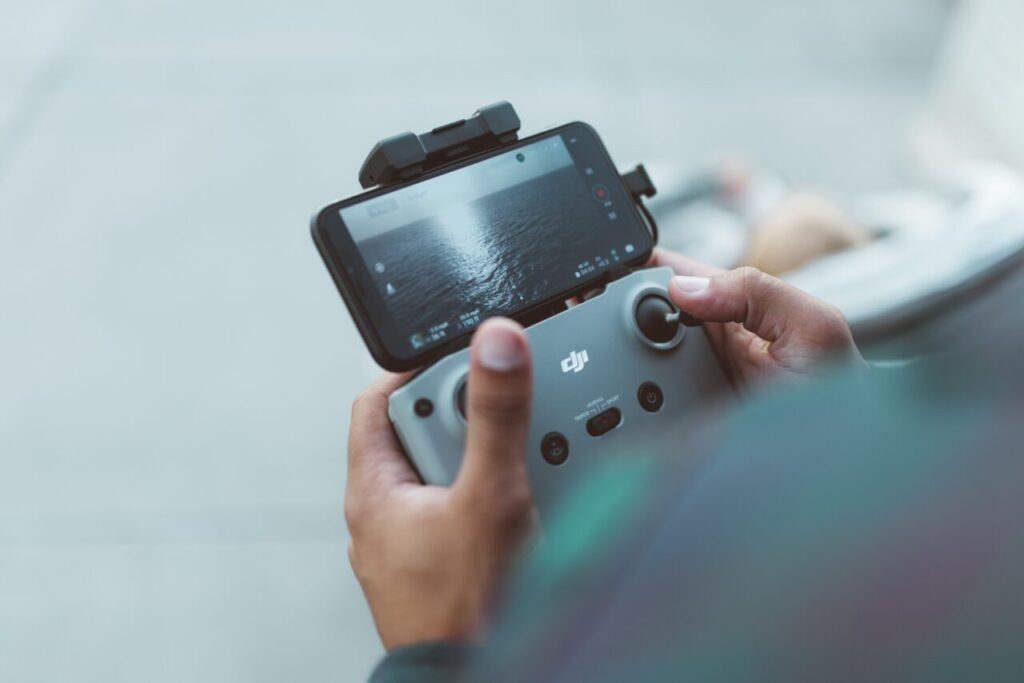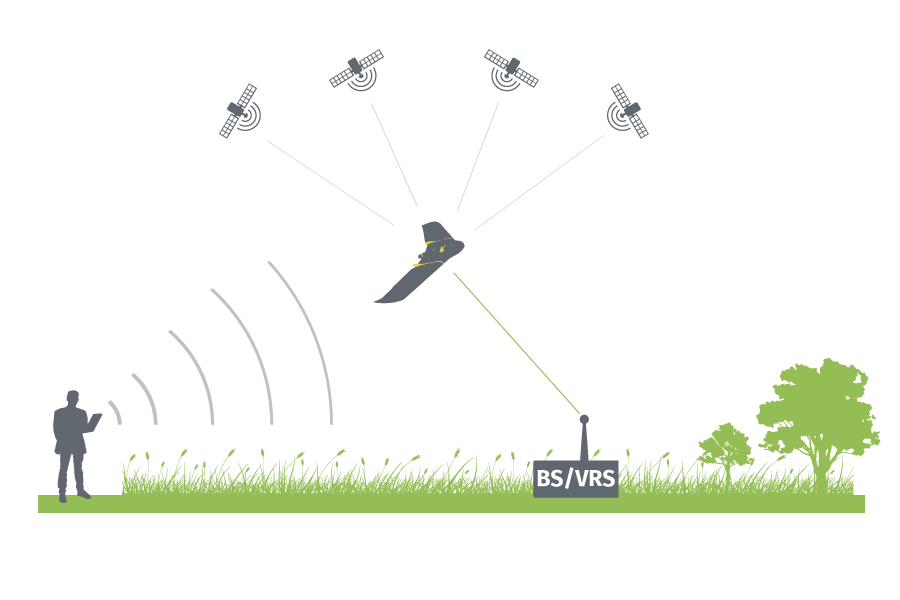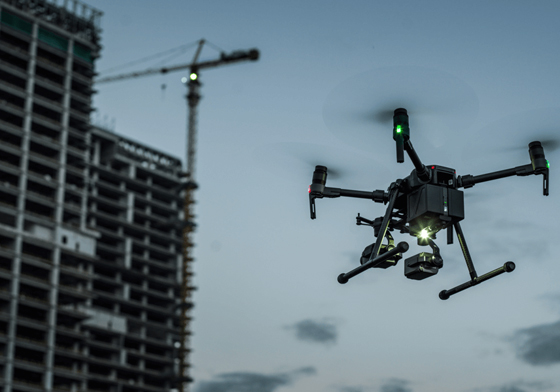More and more fields and industries use drones for various reasons, and farming is no exception to this rule. Farmers now turn to drone technology to help them with numerous agriculture-related tasks, such as pest management, surveillance, and analysis.
Being one of the most troubling factors to agricultural practitioners, pests are not only hard to get rid of, but they also act as a catastrophe for farm produce. Once a plantation had been invaded by pests, 90% of farmlands connected to each other will also be infected causing huge losses and a significant drop in product quality. It is undoubtedly that human power is weak and slow, once a plot of the crop has been sprayed with effective pest control, these parasitic creatures will merely migrate to neighboring fields and the same process will repeat again. This futile effort will only bring another dire situation which is overworked manpower.
To address this concerning problem, advanced technology such as drones had started being used in agricultural industries, especially for pest management. The wide array of features ensures the plant protection measures were taken into concerns and effectively executed.
Precise Application of Pest Management
Drones equipped with spraying systems can precisely apply pesticides and other pest control agents to affected areas. With GPS and onboard sensors, drones can autonomously navigate fields or specific locations, ensuring even distribution of the treatment. This futuristic pest control management is specifically designed and programmed to calculate the exact quantity of pesticides needed in affected areas making it safer and more economically friendly.
Not to mention the fast and efficiency of these unmanned pest management essentials. Drones can reach remote or hard-to-access areas, such as tall buildings, rooftops, or dense vegetation, where pests may be present. They can quickly cover large areas in a short time, reducing the time and effort required for manual inspections. This efficiency allows pest management professionals to respond swiftly to infestations, preventing the spread of pests and minimizing potential damage.
For reference, Oryctes, a powerful and accurate drone, revolutionizes crop spraying for agribusinesses of all sizes. A wide application is the use of drones in precision agricultural management where with pre-defined trajectories and measurements, farm productivity and management can be improved with the least manual labor and the most optimistic results. Although it is expensive to build algorithms and establish relationships between ground truth and spectral signatures, it is a user-friendly technique once the basics studies are done.
Aerial Surveillance
Drones equipped with high-resolution cameras and thermal imaging sensors can conduct aerial surveillance over large areas. Pest management professionals can use this technology to identify potential pest infestations, locate breeding grounds, and assess the extent of the problem. By capturing real-time images and videos, drones enable rapid and accurate pest detection. The use of drone monitoring systems by farmers allows them to observe aerial views of the harvest. This provides details about the water system, different types of soil, pests, and fungus infestations. Drone-collected crop photos provide information in the infrared and visible spectral ranges. It is possible to extract various elements from these photos, which provide information about the health of plants in a way that is invisible to the naked eye. Another crucial aspect of this technology is its capacity to regularly monitor the yield, such as every week or even every hour. Crop information is frequently available, enabling farmers to make necessary adjustments for better crop management.
Drones can be programmed to regularly survey and monitor specific locations for signs of pests. By capturing images and analyzing data over time, they can detect early indications of infestations before they become widespread. Early detection enables proactive pest management, helping to prevent extensive damage and reducing the need for intensive control measures later on.
Safety and Environmental Considerations
Drones offer a safer alternative to traditional pest control methods that may involve climbing tall structures, accessing hazardous areas, or exposing individuals to harmful chemicals. By using drones, pest management professionals can minimize risks to human health and safety. This method reduces the need for manual labor, minimizes human exposure to chemicals, and optimizes resource usage by targeting specific areas rather than applying treatments uniformly across an entire field. If one man could cover 1 hectare a day, one drone could simply cover 6 hectares in 10 minutes.
Additionally, targeted pesticide application facilitated by drones reduces chemical usage, minimizing potential harm to the environment and non-target organisms. Overall, drones can be employed in almost all agricultural field operations and are considered excellent tools for rapid, reliable, and non-destructive detection of field problems.
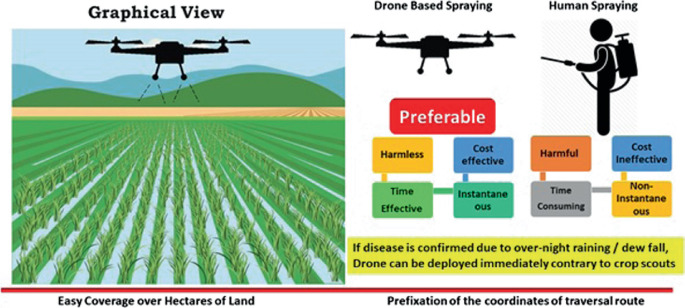
Unethical pest control management will cause diseases, pollution, and the fertility of the soil to degrade by the application of different types of pesticides, insecticides, and fertilizers, however, with the right amount of pesticides, these can be avoided. Manual spraying by the crop scouts over hectares of land will eventually affect the nervous system and most of the functionality of the human body parts that were exposed.
Conclusion
Drones have been pushed as an essential product for farmers. This aerial technology provides pest management professionals with enhanced surveillance capabilities, efficient data collection, precise application of treatments, and improved safety. By utilizing drones in pest management, experts can detect infestations early, respond quickly, and implement targeted and effective control strategies, leading to more efficient and sustainable pest management practices.
See what our customer says about Mist Drone and how it helped him!
Reference
Implementation of drone technology for farm monitoring & pesticide spraying

